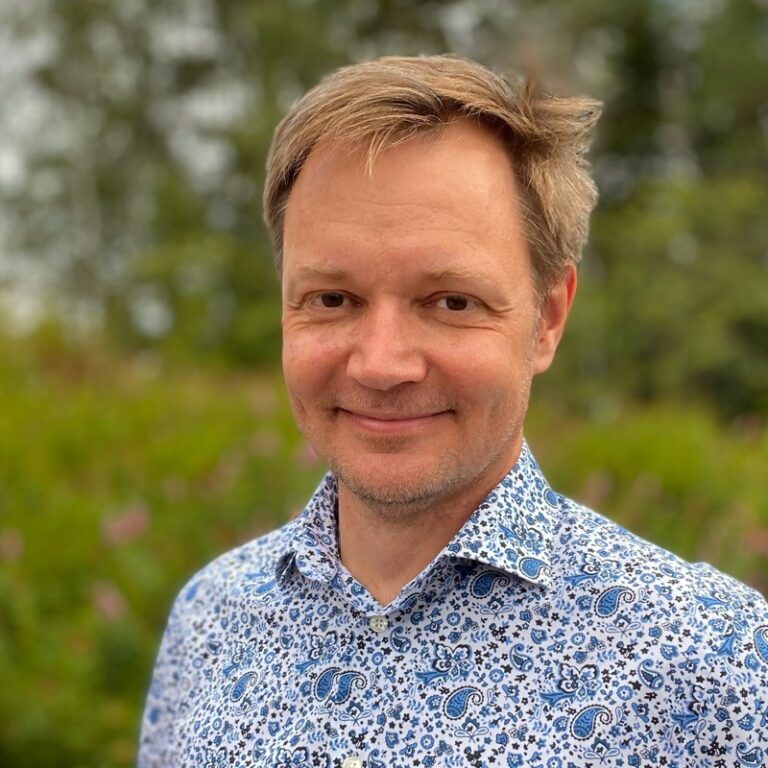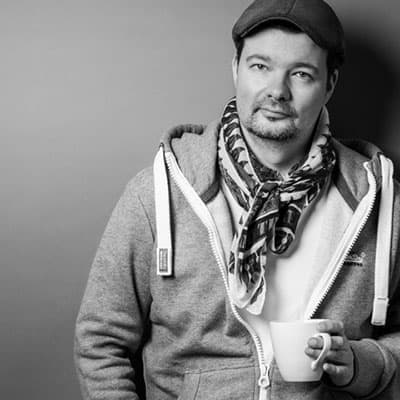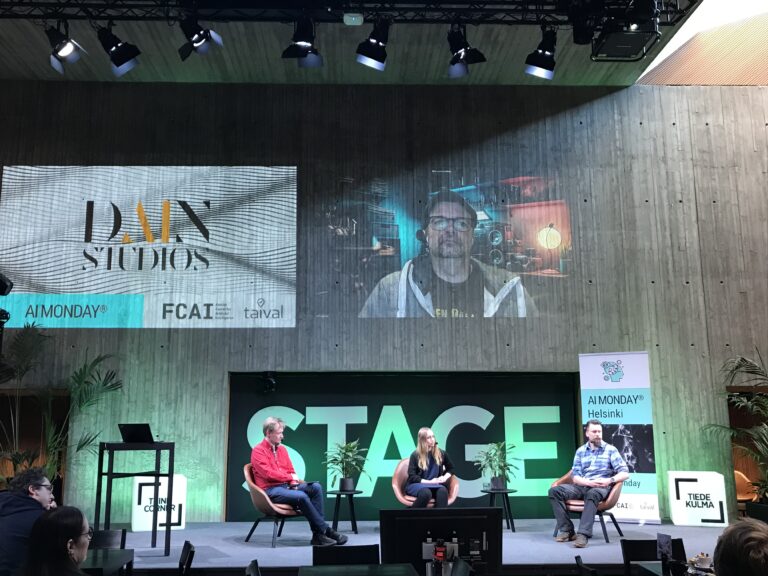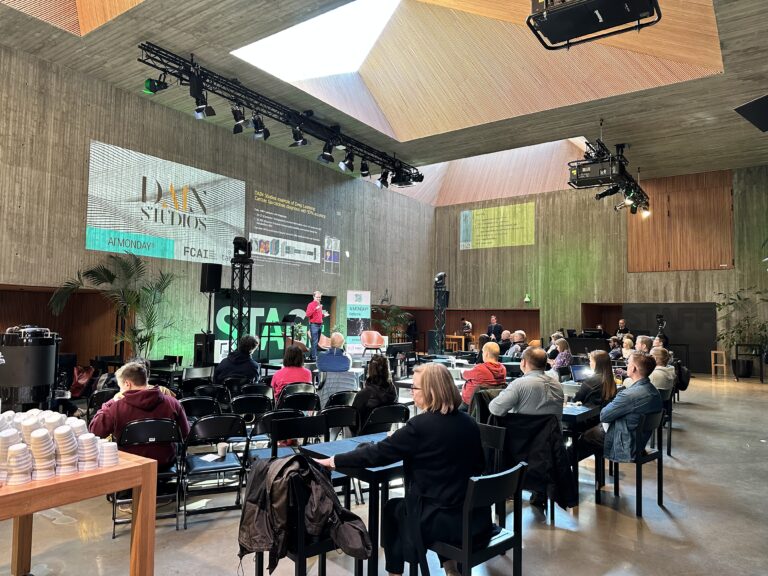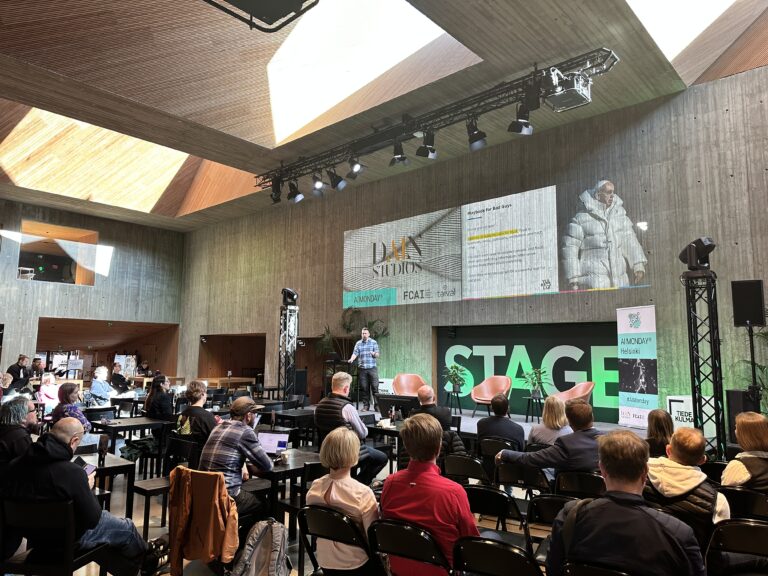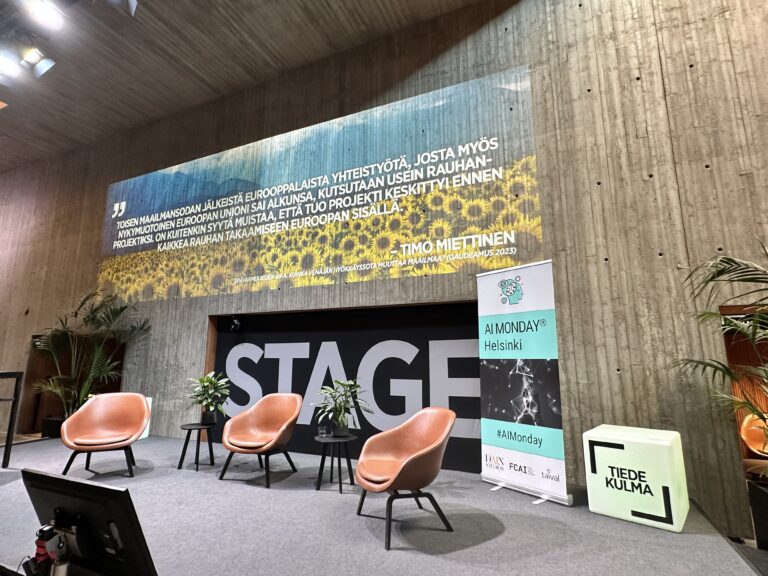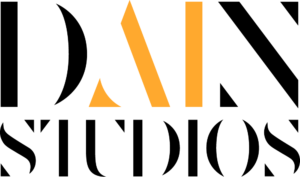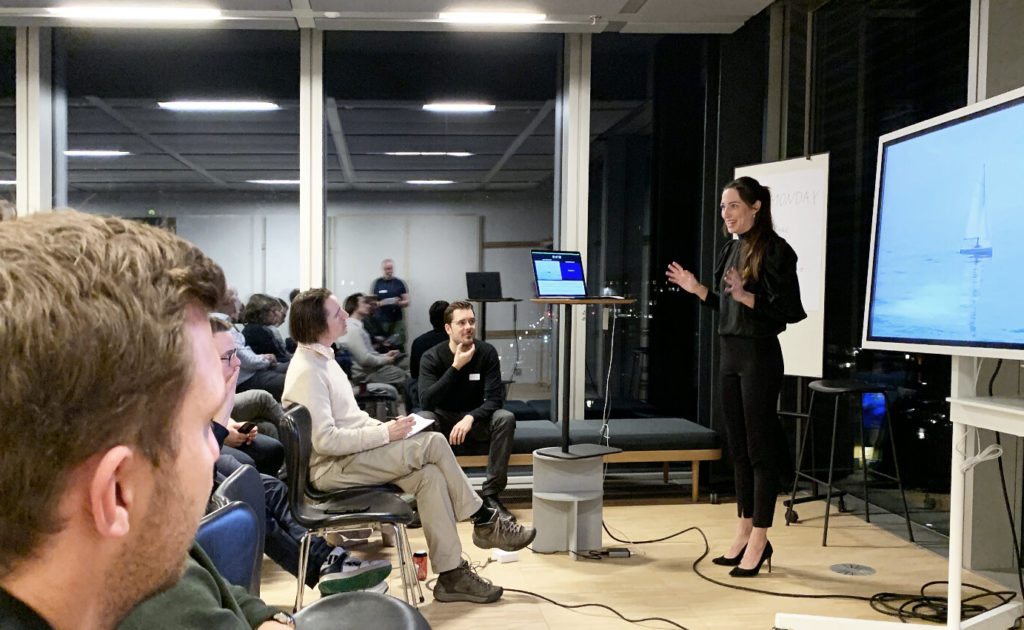“Interesting time”
The gathering began with some introductory words by Hugo Gävert. With 15 years experience in data science across various sectors, Hugo is Chief Data and AI Officer at DAIN Studios. He works directly with business leaders—helping them maximize the potential of data and AI.
At the outset of his talk, Hugo emphasized the significance of the present day. With regard to generative AI, he said, “this is an interesting time because we’re taking huge leaps.”
During his session, he answered questions such as the following:
What is artificial intelligence? Here Hugo drew a distinction between artificial narrow intelligence, artificial general intelligence, and artificial super intelligence. He went on to suggest that ChatGPT exhibits some characteristics of artificial general intelligence but it’s not sentient and can’t plan ahead or reason.
How does ChatGPT work? At this point Hugo outlined how the chatbot works by predicting the next word based on the previous text.
What use cases are there for Generative AI? Hugo explained that the technology is a great partner for creativity, innovation, and testing ideas. Practical uses include content writing, analysis, and code generation.
At the end of his introductory talk Hugo underlined that we should all be aware of the privacy implications of ChatGPT. “Don’t put private [company] information into ChatGPT,” he said, “by default it’s used for training purposes… Use the APIs and playgrounds for that.”
“It’s going to be tough for us”
Next up was Aki Kekäläinen. Aki is a founding member of Yle News Lab where he leads three teams: Elections and Democracy, AI and Journalism and Co-operations and Experiments. Aki has a long history of using technology and user-centered design methods to make the world a better place.
Aki summarized Voitto, a model his company uses data to create news-based content based on facts. He took time to give his assessment about the implications of the emergence of generative AI in a news context stating:
“It’s not going to be fun and games. It’s going to be tough for us. Because we’re in the truth business….for society it’ll be difficult to know what’s true and what’s not. That is a problem.”
“Journalists need more than ever to cut through the noise”
Taking the stage after Aki, Päivi Ala-Risku added more details as to the effect generative AI is having on journalism.
With a M. Sc. in Data Journalism, Päivi is a producer at the Helsingin Sanomat data desk—working on news automation, tools development, and data journalism projects.
Taking stock of the landscape in journalism post-ChatGPT, Päivi made clear that generative AI won’t “destroy” journalism. By itself, ChatGPT lacked the means to reach the standard of professional journalism—owing to its tendency to hallucinate.
At the same time, Päivi emphasized that the key was an AI “collaboration with journalists”.
“It’s going to disrupt the whole thing”
Last to the mic, Antti Karppinen offered insights in the field of image generation.
An acclaimed photographer and digital artist—Antti specializes in corporate brand images and storytelling, working with clients such as Ponsse, Sievi, Honor, Jaguar, Under Armor, and BBC.
His talk was an education in the capabilities of generative AI in the field of visual production. Antti answered questions such as:
What’s a good prompt? Antti clarified that the more detailed the description in the prompt the more detailed the final image. He offered information on negative prompts and underlined the importance of specifying the camera and lighting setup.
How do you train AI models? He provided an outline on how to train AI models so that you get extra control on the styles and locations of executions. Uploading your own images.
What sorts of use cases exist for generative AI? Besides explaining how to use the tech, Antti also talked about where to use image generation. His example cases included sectors such as photography, fashion, product shots, interior design, and architecture.
Summarizing his thoughts about generative AI—Antti said, “it’s going to disrupt the whole thing”.
Panel discussion
As is often the case at AI Monday, the panel discussion was full of insights. In general it offered signs of hope for the future.
For example, Hugo Gävert asked, “how do you foresee the future of art…? It takes time to learn to paint, for instance, why would anybody do that?” To which Päivi Ala-Risku replied, “Well, I don’t know why anyone would write books for the last 100 years because there has been television and movies, but there are still people who write books and read. So, I’m not afraid there will be a huge disruption and no-one will want to paint any more.”
Aki Kekäläinen also offered some optimism. “I hope in the future journalists will do less and less repetitive work and more and more investigating, talking to people, understanding… digging deeper,” he said.
Let’s get the future we want for AI
AI Monday creates intimate alliances between businesses and the tech sector.
Our events are about sharing knowledge and encouraging people to learn more about responsible AI. This all happens in a smart-thinking, open-minded environment.
Why don’t you join us for our next gathering? Sign up to our community and get notified of the next events in your local area.

